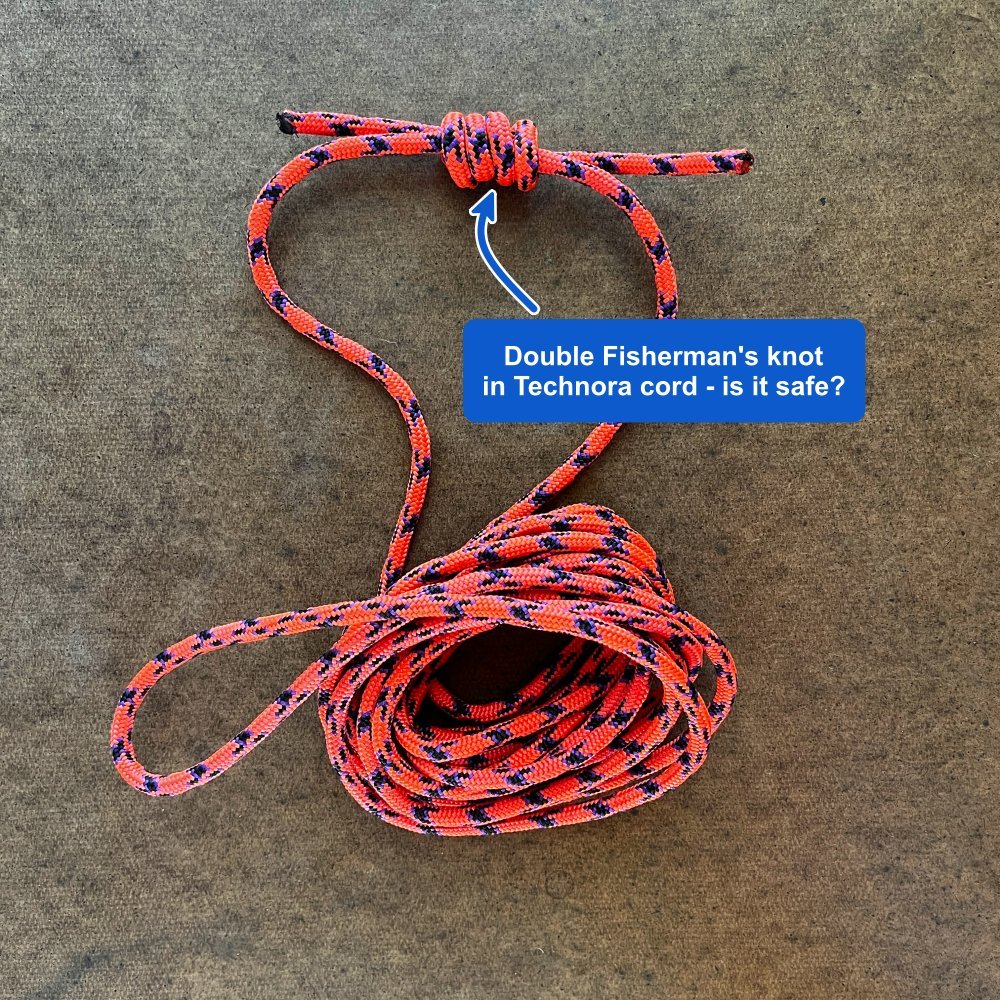Do you need a triple fisherman's for tech cord?
Premium Members can read the entire article here:
General climbing wisdom:
Use a double fisherman's knot to securely connect cord ends to make a permanent loop (like for a cordelette) in standard cord.
Use a triple fisherman’s knot to securely do this in so-called “tech” cord, that might have a Dyneema or Technora/Aramid/Kevlar core.
(Sidenote: yes, this several-different-names-for-the-same-thing is confusing! “Technora” and “Kevlar” are trademarked names. “Aramid” is a more general name, sort of like “Kleenex” and “facial tissue”,
I sure remember learning this when I first started climbing. Way back then, about the only tech cord available was this extremely stiff Kevlar cord that we used for stringing hexes (remember those?) With that ancient cord, the triple was the way to go.
Turned out that that extra stiff material didn’t have very good fatigue resistance, so it fell out of favor. Modern Aramid cord like Technora is more supple, and is more resistant to fatigue, i.e. repeated bending in the same place, like what happens inside a permanent knot.
The classic triple fisherman's knot endures in the modern era. The question is, do you still need a triple fisherman’s, or will a double work?
Ryan Jenks, the gear breaking mad scientist genius behind HotNot2, did some testing on this, using Sterling Powercord. This is very nice cord: 6 mm, rated to 19.5 kN, nylon sheath with a Technora core.
Here are the break test results (yes, small sample size of 1)
Powercord double fisherman's: 18.7 kN.
Powercord triple fisherman’s: 21.9 kN
So . . . the triple was a bit stronger, but the double was quite close.
Given about the largest possible force in recreational climbing is around 8-ish kN, and your spine is going to start breaking around 12, the double fisherman’s appears to be just fine.
The main advantage to using the double? You use less cord to tie it, which is less expensive and a little bit lighter. Is there any downside to using a triple is it makes you feel warm and fuzzy? Not really.



